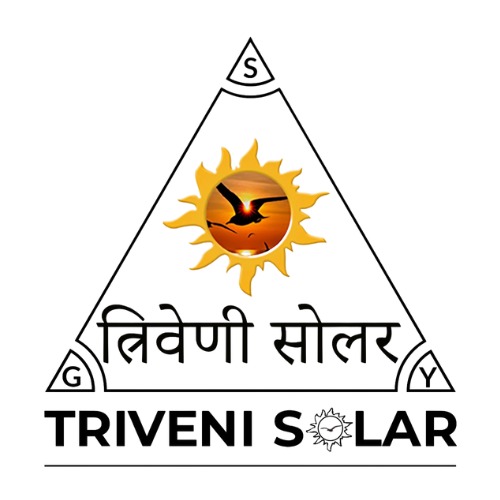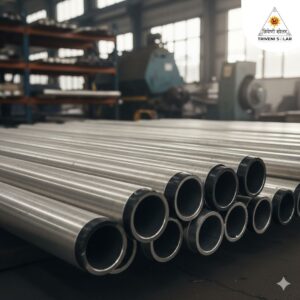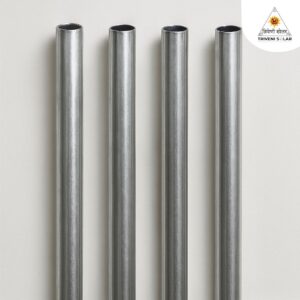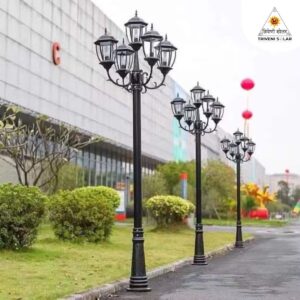Mild steel poles are durable, affordable, and versatile structures used for street lighting, utilities, and infrastructure projects. Made from low-carbon steel, they offer excellent strength, easy fabrication, and cost-effectiveness. With galvanization, they resist corrosion and deliver a lifespan of 25–50 years in Indian conditions.
Why Mild Steel Poles Matter
In modern India, infrastructure is the backbone of development. Whether it’s urban roads, highways, airports, or industrial complexes, poles play a vital role in supporting street lighting, utilities, and signals. Among all materials, mild steel poles stand out as the most cost-effective, durable, and versatile choice. From highways to residential areas, they ensure reliable performance while keeping costs under control.
What Are Mild Steel Poles?
Mild steel poles are fabricated from low-carbon steel containing 0.05–0.30% carbon. This composition makes them ductile, easily formable, weldable, and cost-effective. They are widely used across India for lighting and utility purposes due to their high strength-to-cost ratio.
Properties & Technical Specifications
Below are key technical specifications of mild steel poles:
| Property | Specification |
|---|---|
| Carbon Content | 0.05–0.30% |
| Tensile Strength | 400–550 MPa |
| Yield Strength | 250–350 MPa |
| Length Range | 3 m to 12 m (customizable) |
| Surface Protection | Hot-dip galvanization, powder coating |
| Expected Lifespan | 25–50 years (with protection) |

Manufacturing Process of Mild Steel Poles
The manufacturing process involves several steps:
- Selection of high-quality mild steel sheets.
- Cutting and bending into the desired pole shape.
- Automatic welding for durability and strength.
- Surface treatment through hot-dip galvanization or powder coating.
- Quality inspection for load capacity and finishing.
Types of Mild Steel Poles
- Street Light Poles—For highways, city roads, and rural development.
- High Mast Poles – Tall poles for stadiums, airports, and industrial zones.
- Decorative Poles—Designer poles for parks, housing societies, and urban beautification.
- Traffic Signal Poles – For intersections and highways.
- Utility/Power Poles—For telecom and electrical transmission.
Applications of Mild Steel Poles
Mild steel poles are widely used across India:
- Street and highway lighting.
- Industrial and commercial complexes.
- Parking areas, airports, and railway stations.
- Telecom, signage, and CCTV mounting.
Advantages of Mild Steel Poles
- Durability—Withstand heavy loads and harsh environments.
- Affordability—Lower cost than aluminum or concrete alternatives.
- Easy Installation—Simple to transport and erect.
- Customizable – Available in various heights and designs.
- Safety – Tested for wind load and structural stability.
Challenges & Limitations (And Solutions)
- Corrosion Risk – Prevented with galvanization and coatings.
- Weight Compared to Aluminum – Managed using cranes and installation machinery.
- Maintenance—Regular inspection ensures long service life.
Mild Steel Poles vs Other Materials
| Parameter | Mild Steel | Concrete | Aluminum | Wood |
|---|---|---|---|---|
| Durability | 25–50 years | 15–30 years | 20–40 years | 10–20 years |
| Cost | Low | Medium | High | Medium |
| Maintenance | Moderate | High | Low | High |
| Recyclability | 100% | Limited | High | Poor |
Standards & Certifications in India
Our mild steel poles comply with:
- IS 2713 – Indian Standard for steel poles.
- CPWD & NHAI approved designs.
- ISO 9001 & ISO 14001 quality and environmental certifications.
- Railways and state electricity board specifications.
Corrosion Protection & Maintenance Best Practices
To extend service life:
- Hot-dip galvanization for 80–100 micron coating.
- Polyester powder coating for aesthetics.
- Regular inspection for surface cracks or rust.
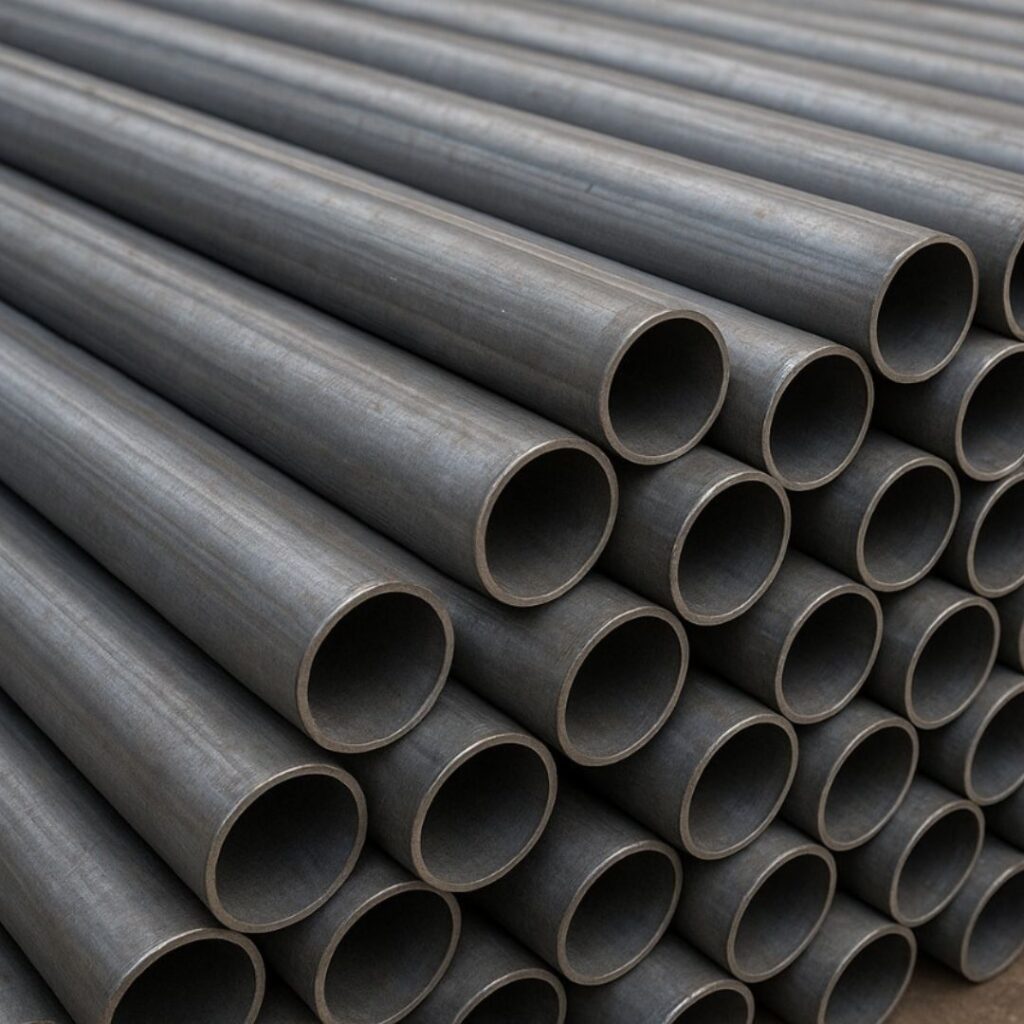
Mild steel poles Installation Guidelines & Best Practices
- Prepare the site and foundation.
- Use cranes for lifting poles safely.
- Provide earthing for lightning protection.
- Test alignment and stability post-installation.
Cost & ROI Analysis for Mild Steel Poles
Mild steel poles provide one of the best returns on investment in infrastructure projects. While aluminum poles may cost 30–40% higher, mild steel offers similar durability at a fraction of the cost. Over a 25–50 year service life, they deliver unmatched value.
Sustainability & Recycling Benefits
Steel is 100% recyclable without losing quality. Using recycled steel reduces CO₂ emissions significantly. For India’s large-scale projects, mild steel poles support sustainable development goals (SDGs).
Case Study: Indian Infrastructure Project Example
A recent NHAI highway lighting project adopted mild steel poles for a 60 km stretch. Compared to concrete, steel reduced installation time by 40% and ensured higher durability. With galvanization, the expected service life is 40+ years with minimal maintenance.
FAQs
What is the lifespan of mild steel poles?
With galvanization, mild steel poles last 25–50 years depending on the environment.
Are mild steel poles suitable for coastal areas?
Yes, provided they are hot-dip galvanized and coated for extra corrosion resistance.
How are mild steel poles protected from rust?
Through galvanization, powder coating, and periodic maintenance checks.
What standards apply to mild steel poles in India?
IS 2713 standards, CPWD and NHAI specifications, and ISO quality norms.
Why choose mild steel over aluminum or concrete poles?
Mild steel poles are more affordable, durable, and customizable with excellent load capacity.
Conclusion & Call-to-Action
Mild steel poles are the backbone of India’s lighting and utility infrastructure. Combining strength, affordability, and sustainability, they are the smart choice for municipalities, contractors, and developers. For certified, durable, and high-quality poles, trust LightPole.co.in—your reliable partner in infrastructure excellence.
